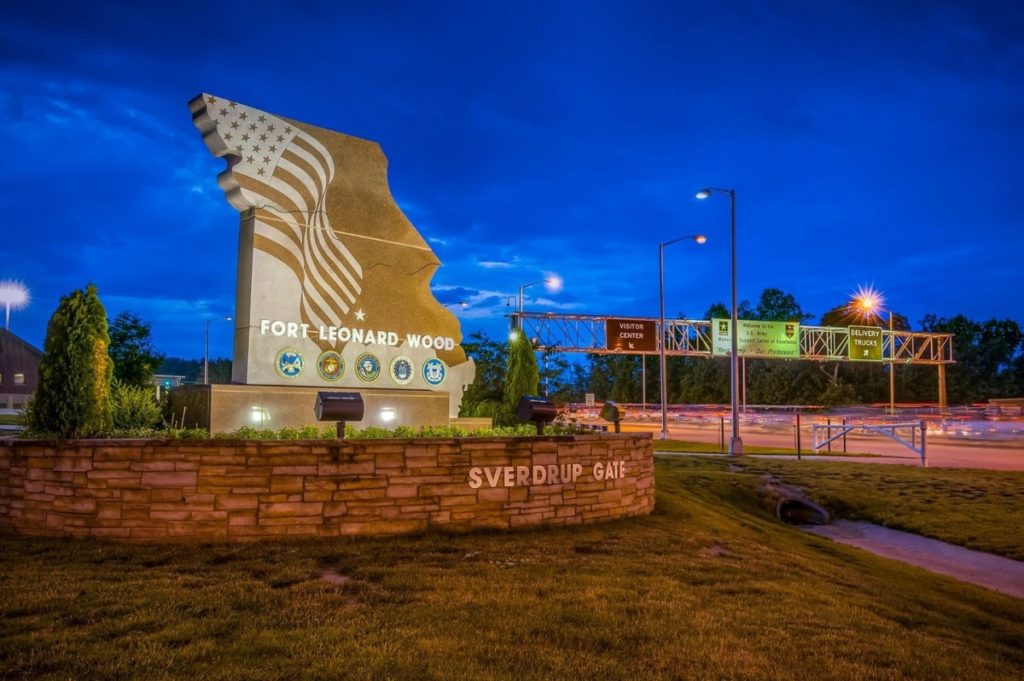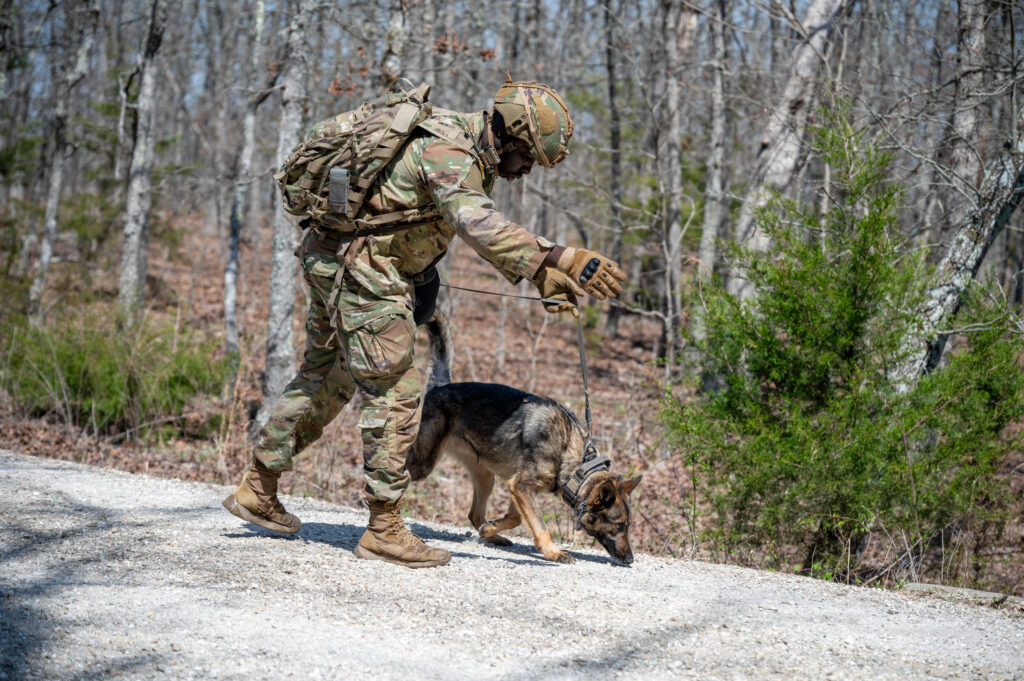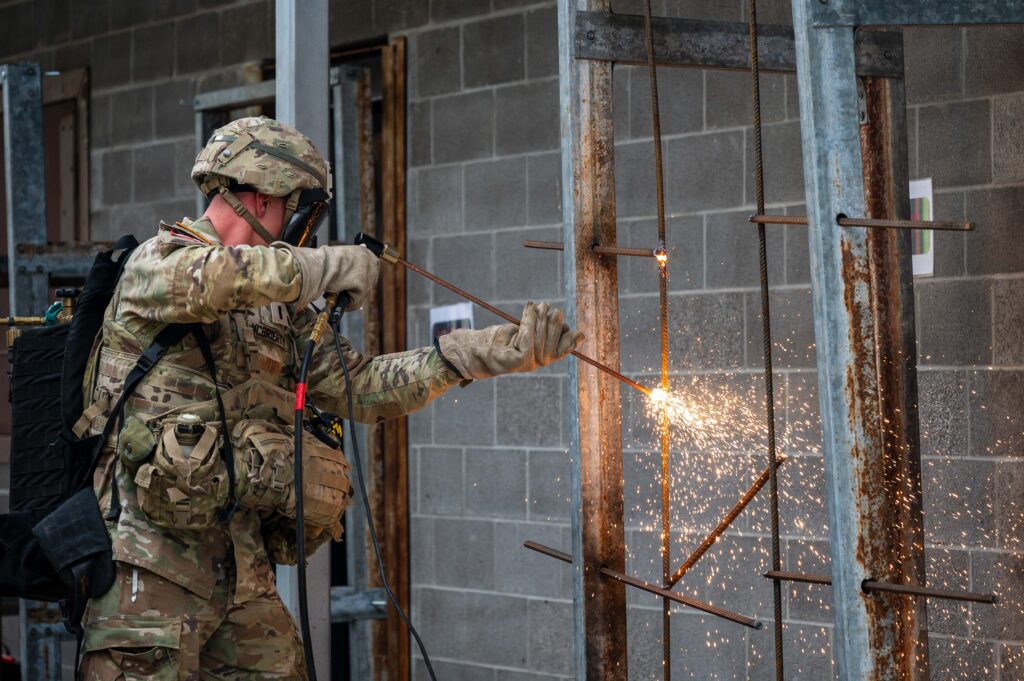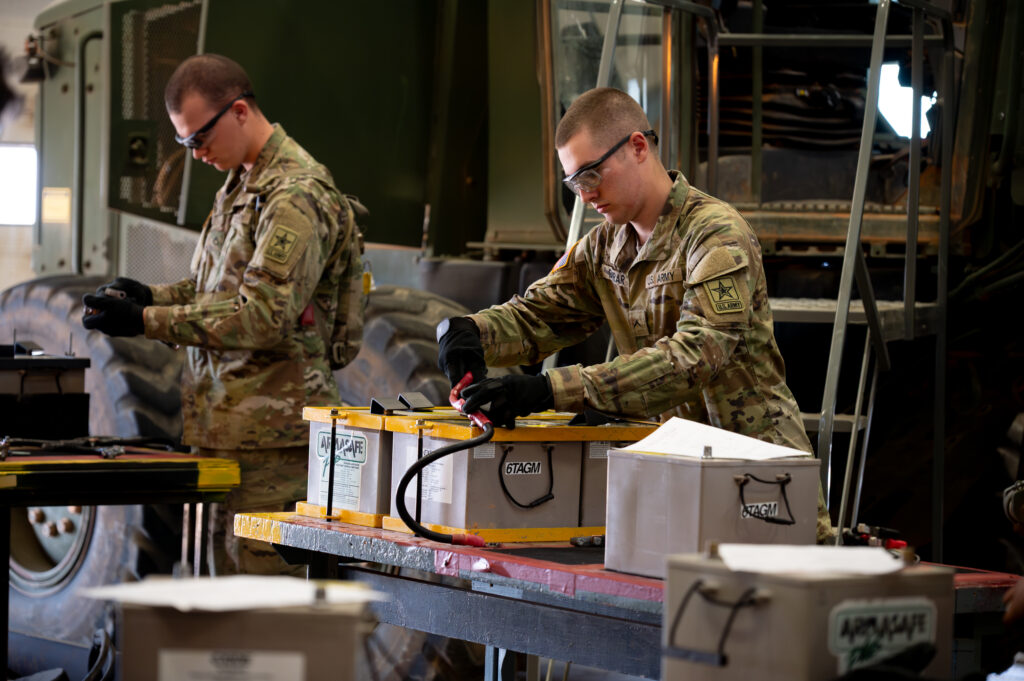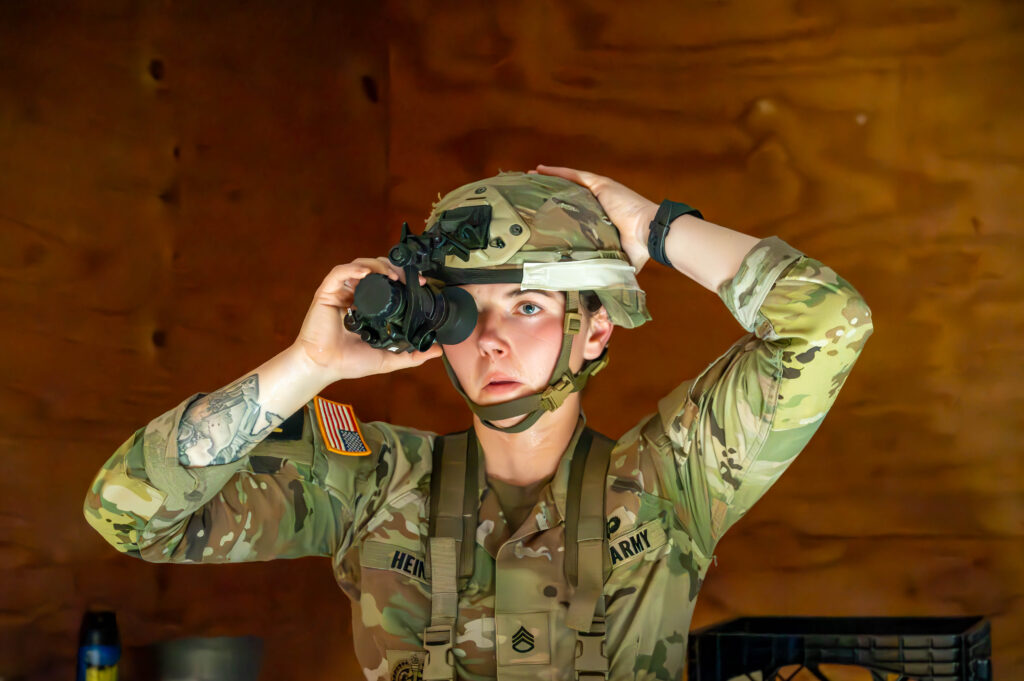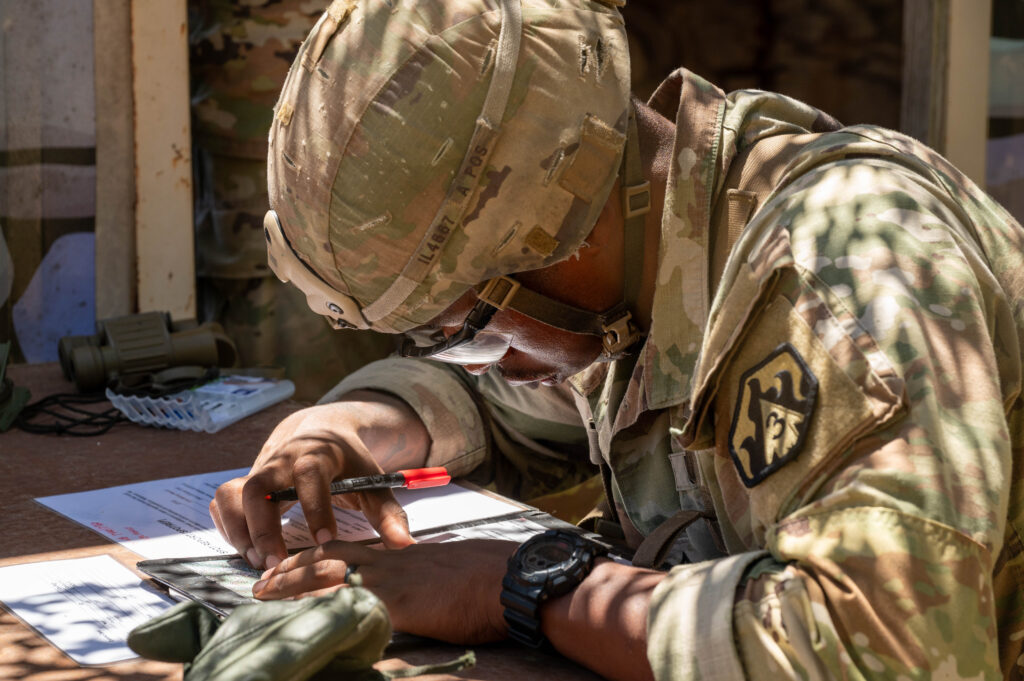Sam Campbell
FORT LEONARD WOOD, Mo. (Nov. 21, 2019) – Fort Leonard Wood engineers with Company B, 169th Engineer Battalion, retired about 200 unserviceable flags Sunday alongside Cub Scouts with Pack 202 at the Waynesville United Methodist Church in Waynesville, Missouri.
“We are here today to honor the symbol of our country and to retire flags which (have) served (their) useful life as a symbol of freedom and of our country,” said Sgt. 1st Class Nicholas Lawton, Company B, 169th Engineer Battalion, technical engineer instructor and Cub Scout Pack 202 den leader. “Men and women have given their lives for it, fought for it, cried for it, and revered it as a symbol for the greatest country on Earth … but when the flag has served its usefulness and no longer is suitable to represent our country, it must be retired and replaced.”
Lawton taught Soldiers in attendance how to properly dismantle the flags before putting them into a fire.
“The flags first have their grommets removed and then, depending on their size, have the stripes separated from the field of blue and then each piece is burned (in accordance with) the U.S. Flag Code,” he said.
The burning of flags has historically been a symbol of protest and anger in some situations. For this reason, some Cub Scouts in the past felt a sense of disrespect when they were told how the flags would be retired.
“About two years ago, the first time we did one of these ceremonies, we explained to the kids that we were going to burn the flag, and two of the kids actually got up and were ready to fight us,” Cub Master Patrick Wadleigh said. “We had to explain to them the reasons why we were doing it, the right way to do it, and that it’s an honor to do that for the flag to retire it that way.”
Laying the flag in a fire is the suggested means of retirement by the U.S. Flag Code, which states, “The flag, when it is in such condition that it is no longer a fitting emblem for display, should be destroyed in a dignified way, preferably by burning.”
According to Lawton, the fire should be “roaring,” encircling the entire flag. Because the group had large flags and a small fire, the flags needed to be broken down.
“The flag, once it hits the fire, it is supposed to be completely engulfed,” he said. “We’re taking and breaking them into pieces, so that way they can be engulfed quickly into the fire.”
Lawton explained that the procedure is symbolically important, too.
“Each stripe represents something different,” he said. “The field of blue stars cannot be cut into as it would show us separating the union. We don’t want to desecrate the flag as we retire the flag.”
Proper flag retirement is not part of basic training.
Lawton said it has become somewhat of an inheritable knowledge.
“(Flag retirement) is an art that is not really taught,” he said. “It’s something that some people who know how to do it — we teach others. Some of these (Soldiers), this is their first time actually witnessing a flag retirement ceremony, and they’re learning the proper steps.”
After the flags are burned, the ashes are formally retired in a veterans cemetery.
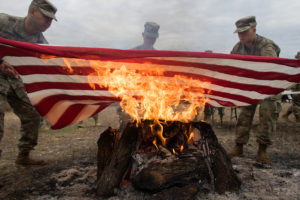



-30-
About Fort Leonard Wood
Fort Leonard Wood is a thriving and prosperous installation that has evolved from a small basic training post more than 75 years ago to a premier Army Center of Excellence that trains more than 80,000 military and civilians each year.
Fort Leonard Wood is home to the U.S Army Maneuver Support Center of Excellence and three U.S. Army schools: the U.S. Army Engineer School; U.S. Army Chemical, Biological, Radiological and Nuclear School; and the U.S. Army Military Police School. In addition to training engineer, CBRN and military police specialties for the Army, Fort Leonard Wood also provides gender-integrated in-processing and Basic Combat Training for new Soldiers.
Fort Leonard Wood also hosts and trains with the largest Marine Corps Detachment and Air Force Squadron on any Army installation as well as a large Navy construction detachment.
More information about Fort Leonard Wood is at: https://home.army.mil/wood/index.php/about/mission
